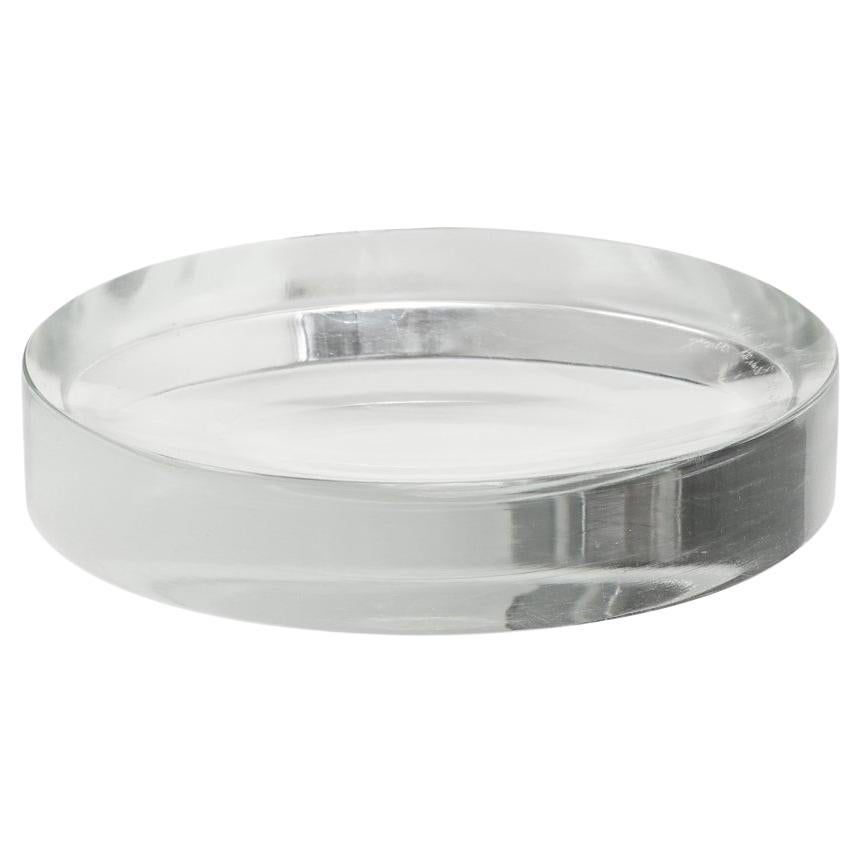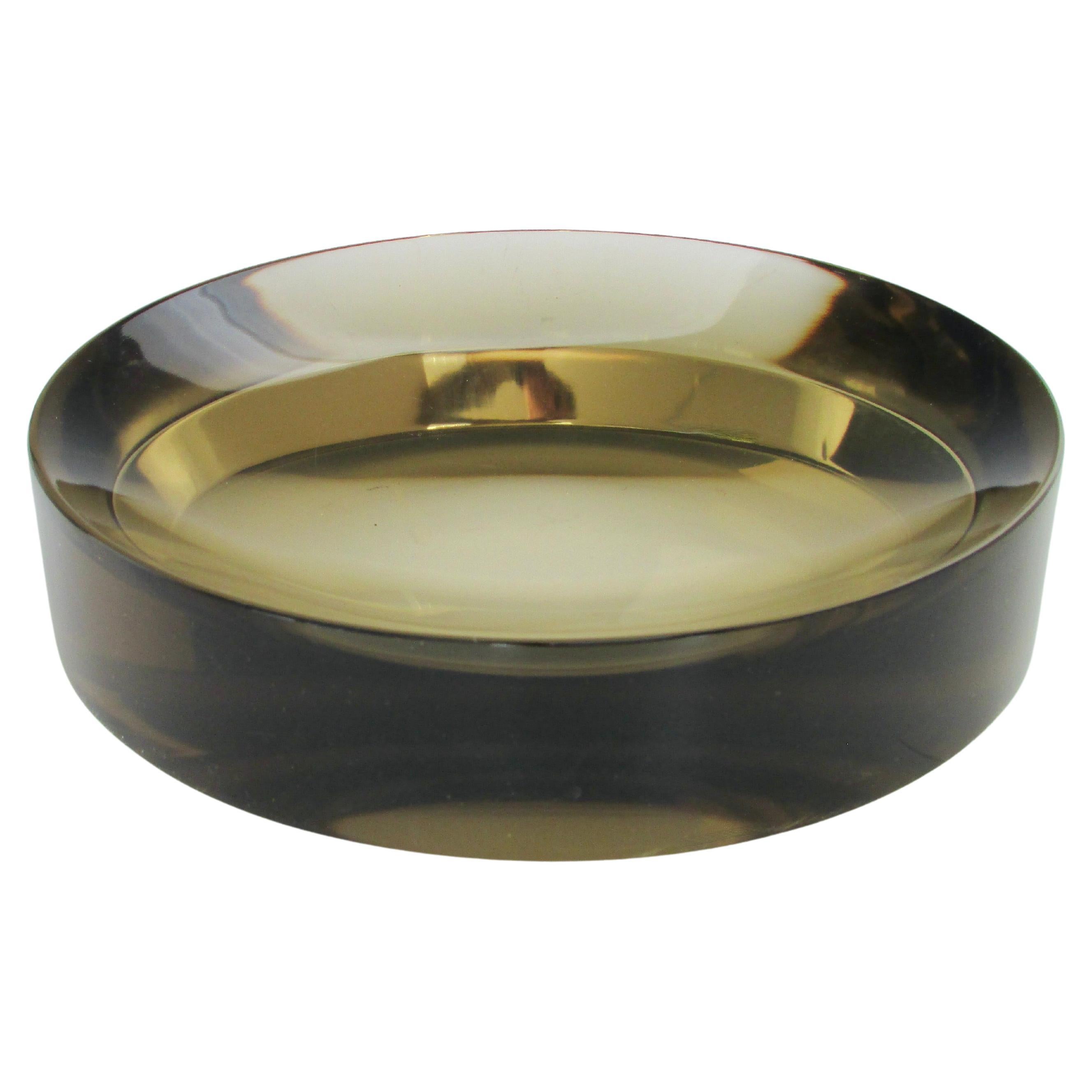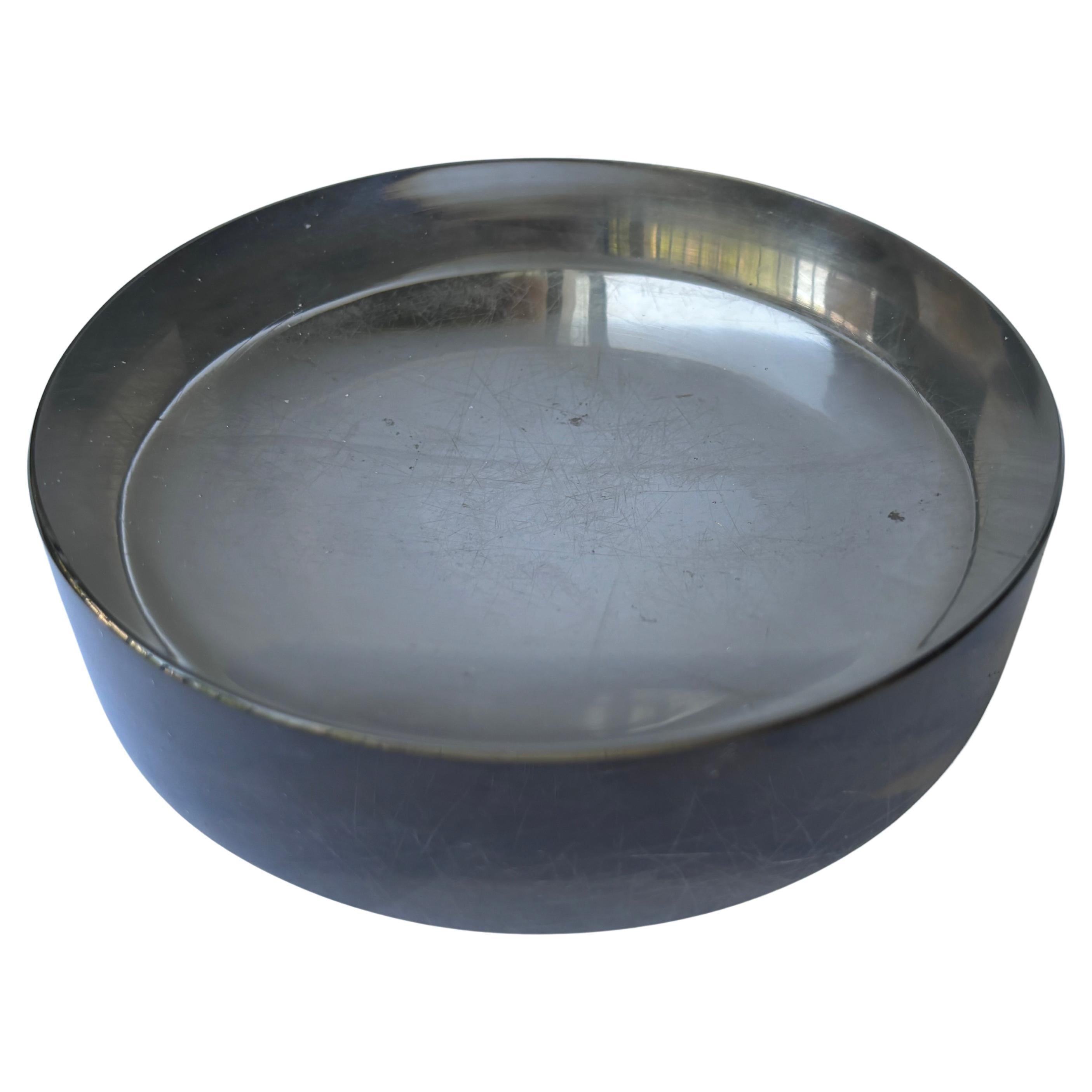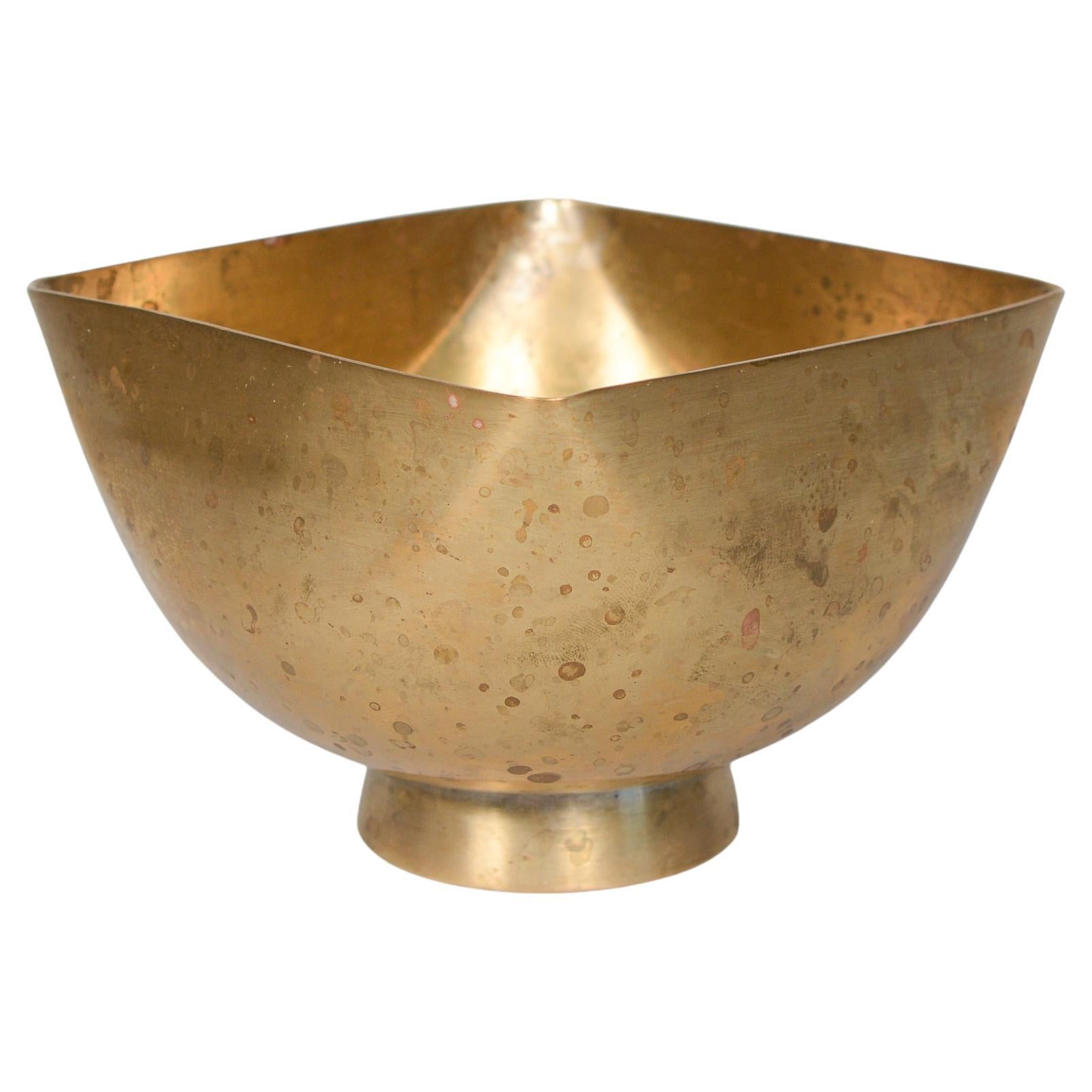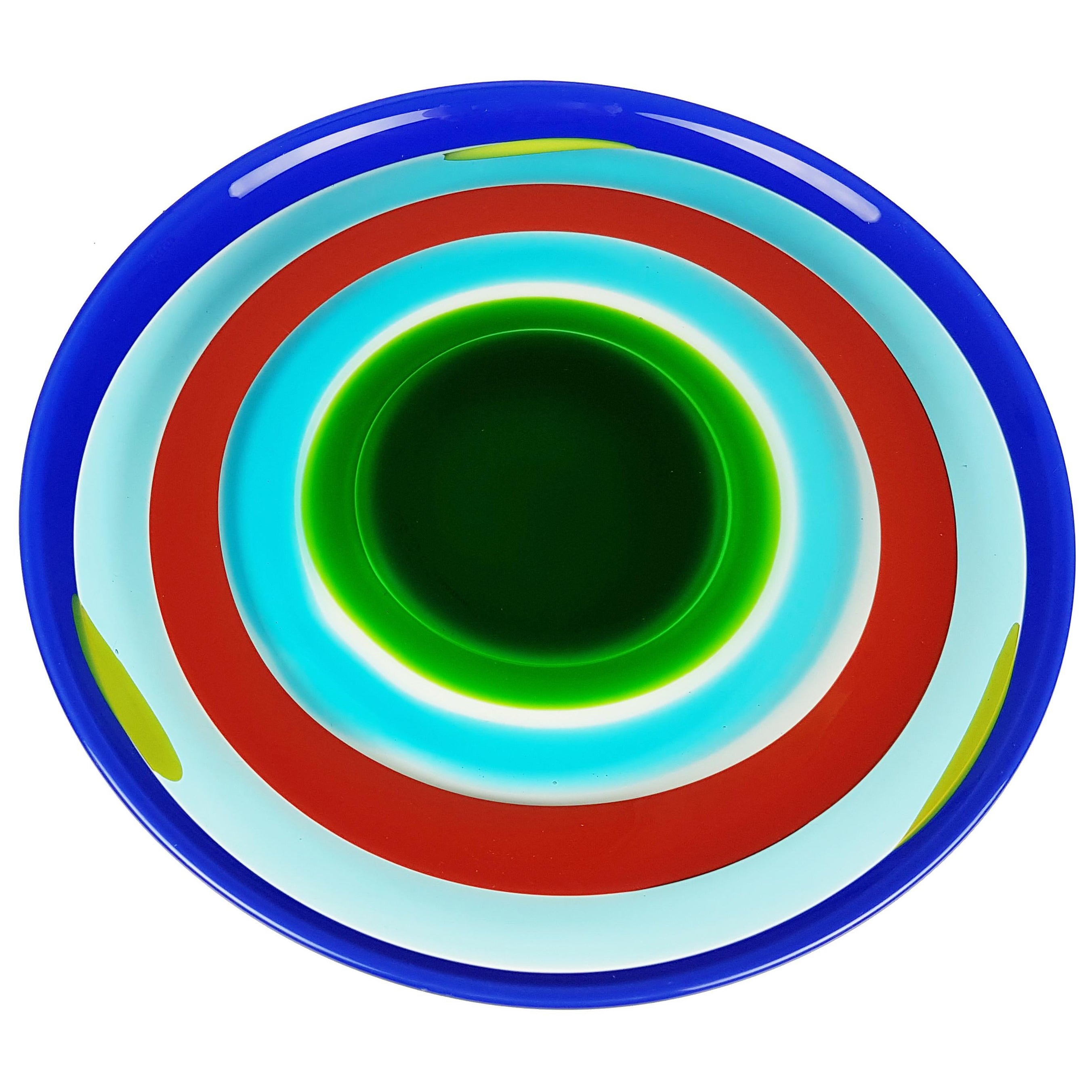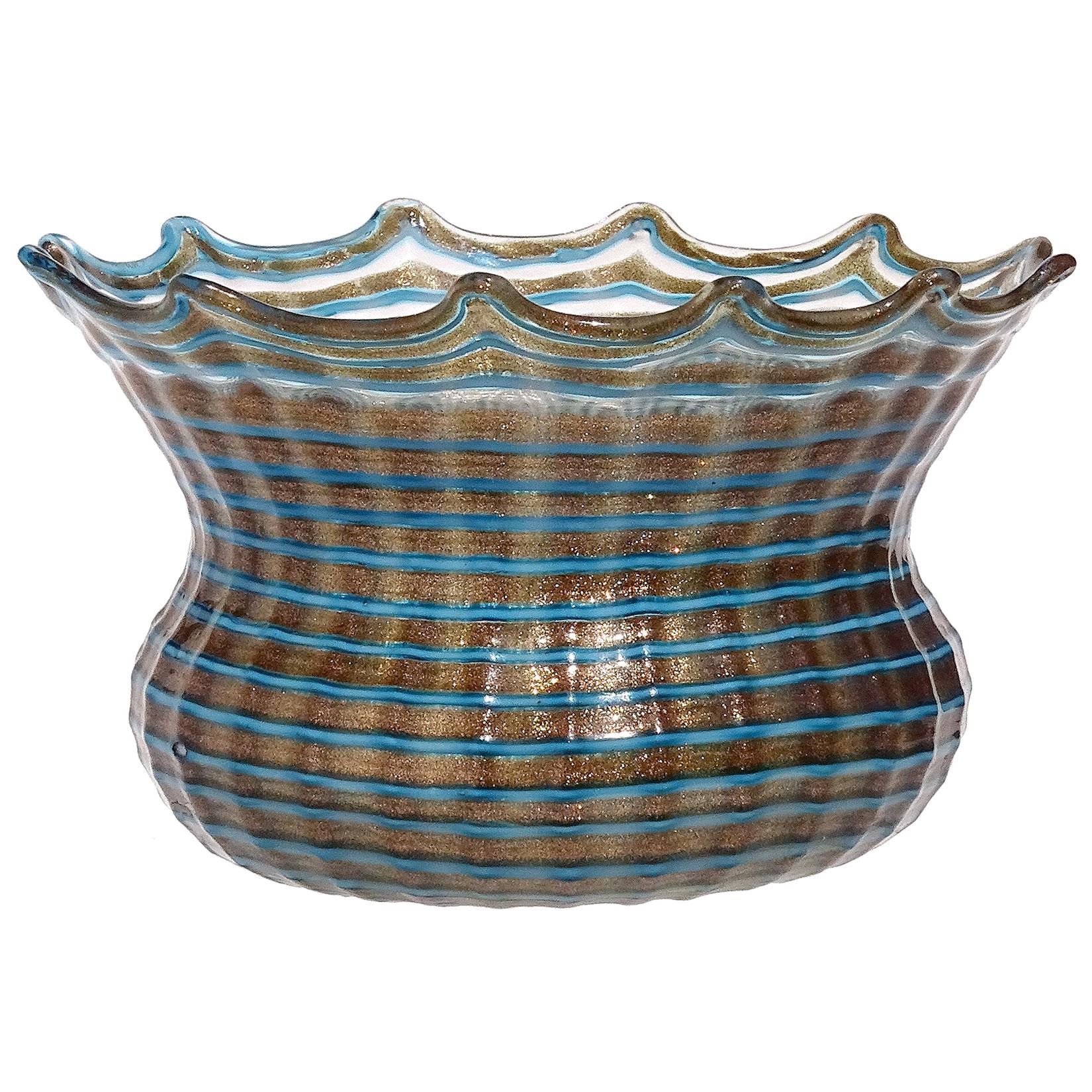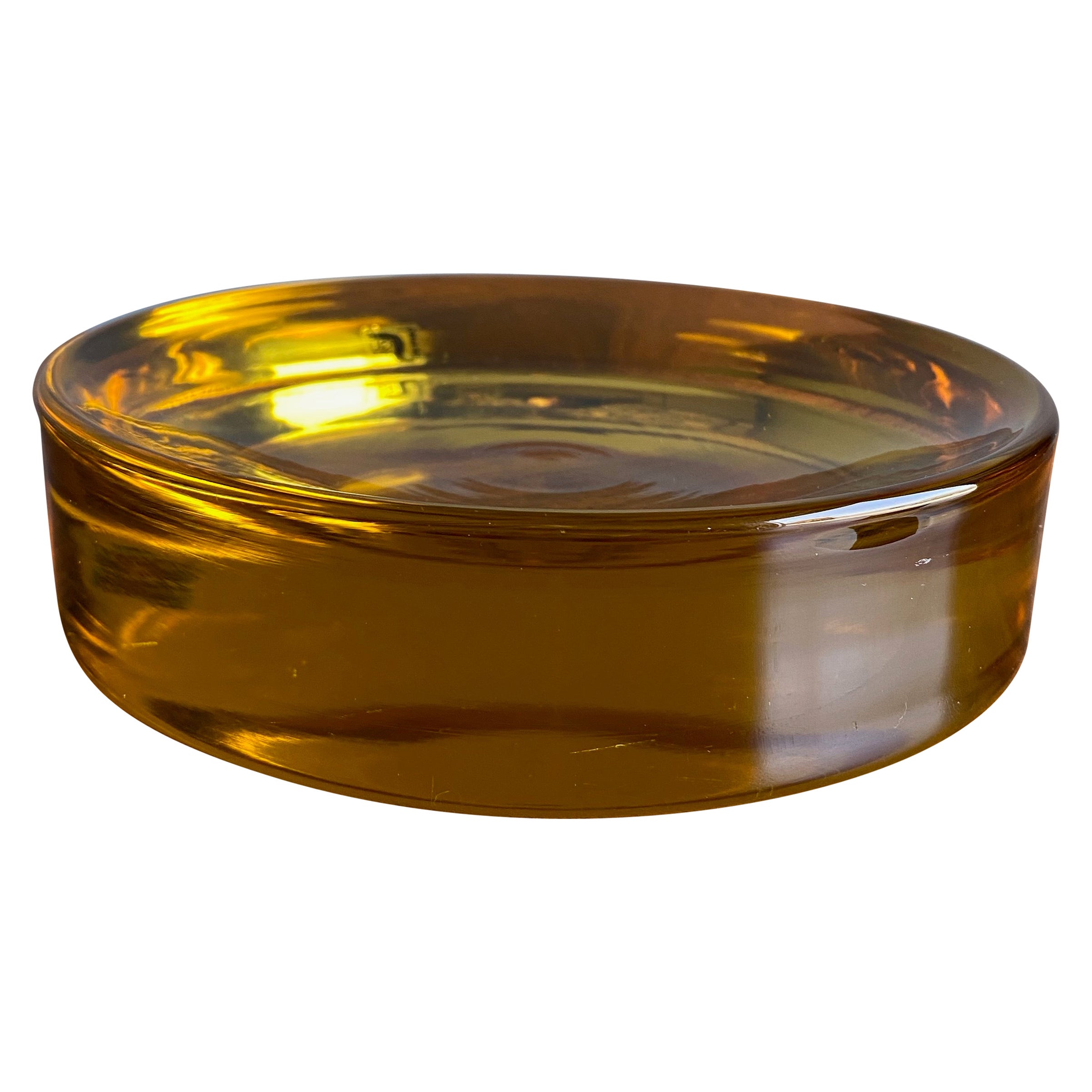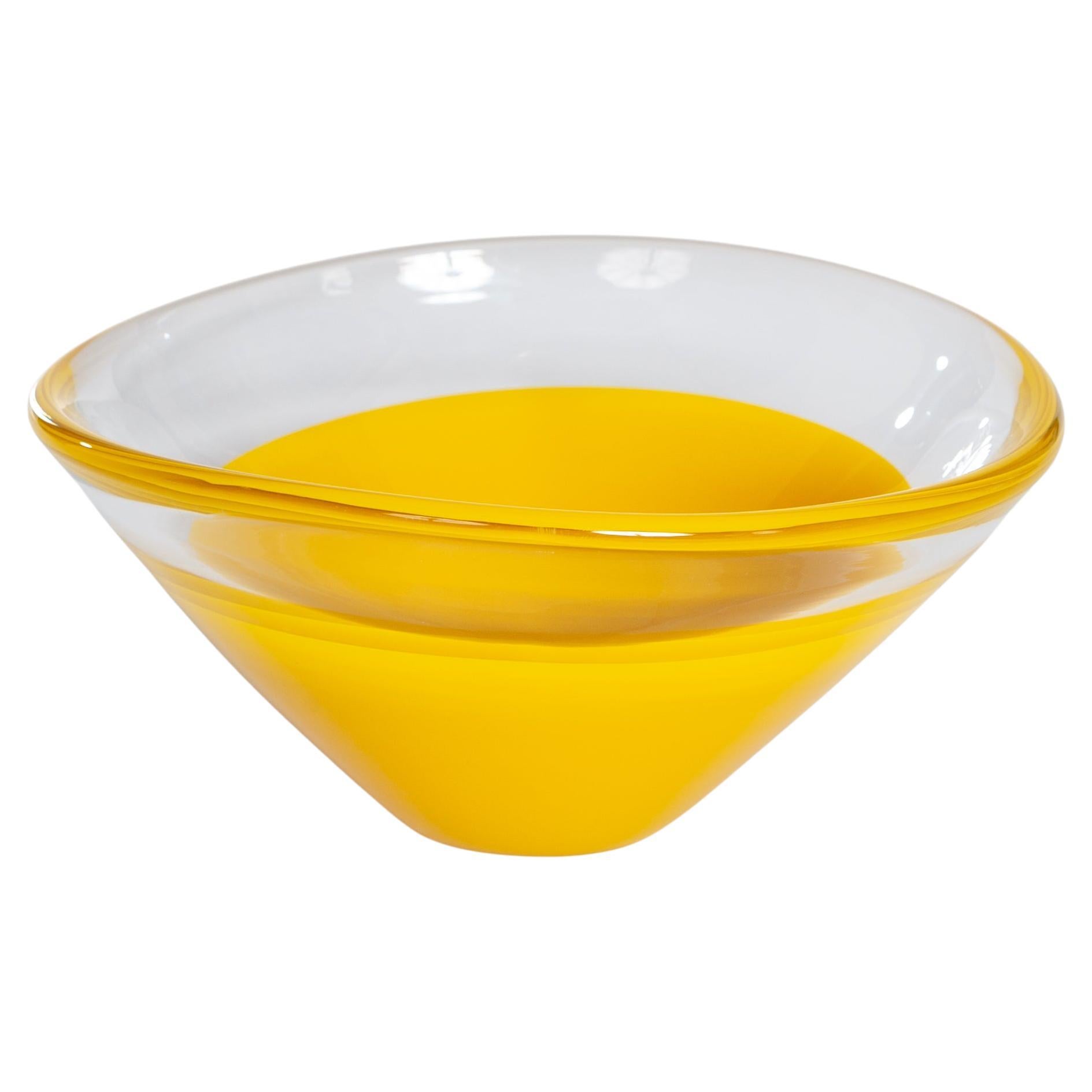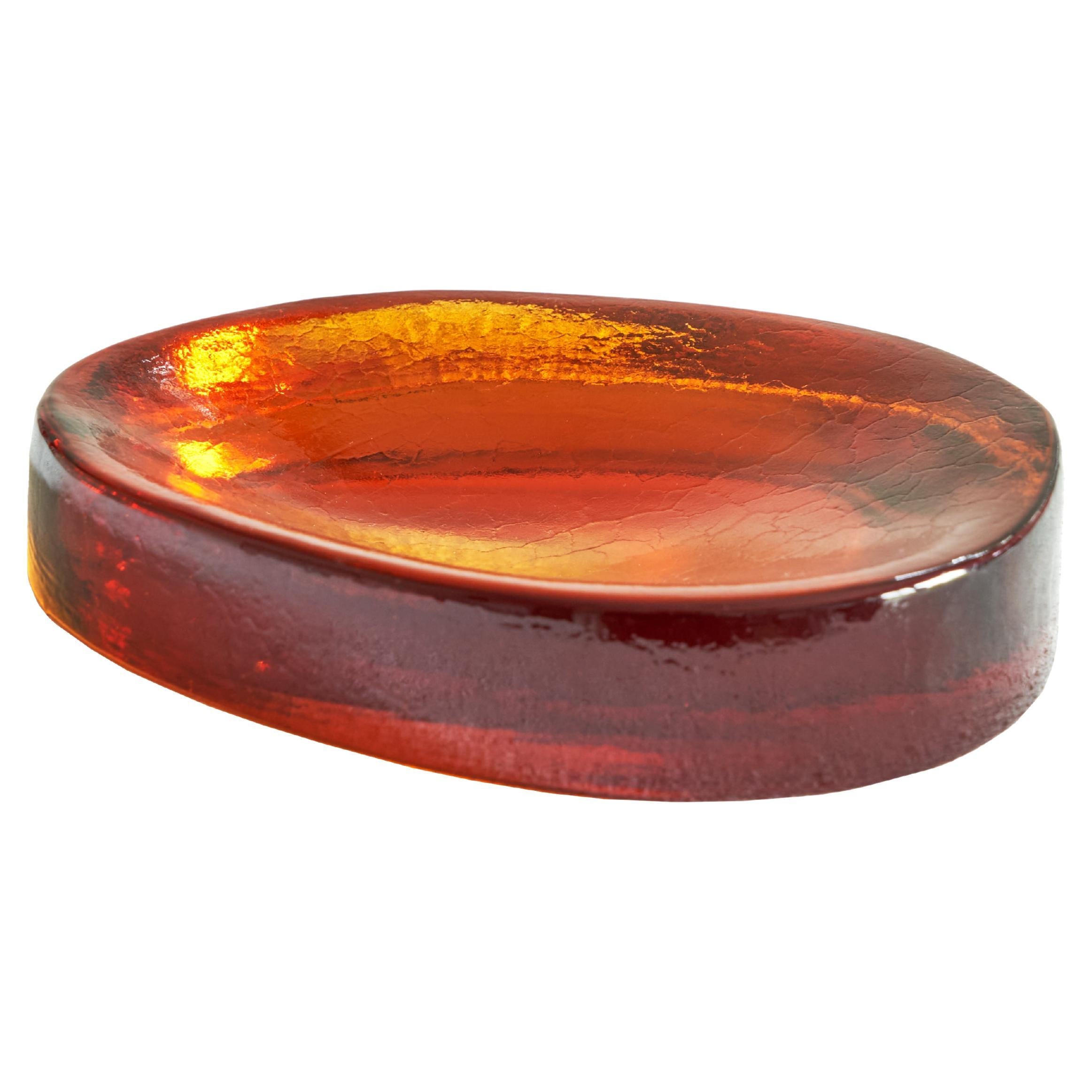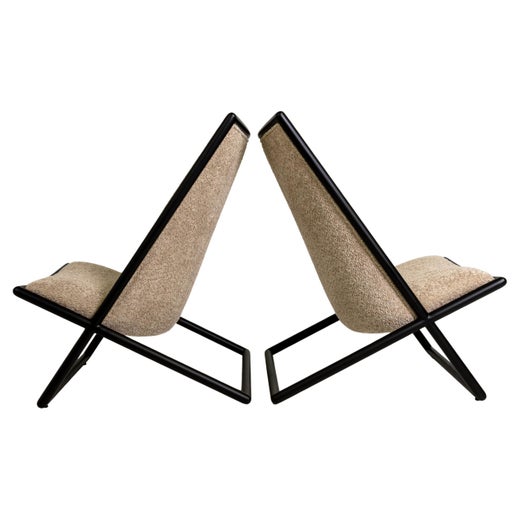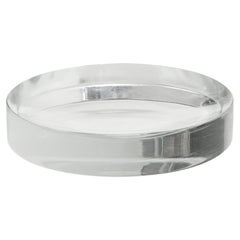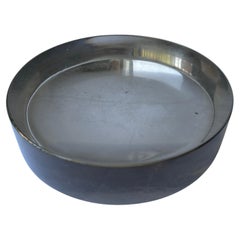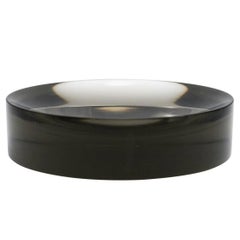
Auburn Grey Concave Optic Glass Dish by Ward Bennett for Salviati, 1964
View Similar Items
Auburn Grey Concave Optic Glass Dish by Ward Bennett for Salviati, 1964
About the Item
- Creator:Salviati (Manufacturer),Ward Bennett (Designer)
- Dimensions:Height: 1.5 in (3.81 cm)Diameter: 6 in (15.24 cm)
- Style:Modern (Of the Period)
- Materials and Techniques:
- Place of Origin:
- Period:
- Date of Manufacture:1964
- Condition:Wear consistent with age and use. Excellent Vintage Condition. Minor scratches on surface and base commensurate with age.
- Seller Location:Los Angeles, CA
- Reference Number:1stDibs: LU223539196271
Ward Bennett
Ward Bennett created everything from interiors and furniture to textiles and flatware. The unsung New York City-born modernist designer drew on the work of Le Corbusier and Auguste Rodin, studied art with the likes of Abstract Expressionist painter Hans Hofmann and counted legendary American luxury house Tiffany & Co. among his clients. For decades, Bennett created and filled spaces that were elegant, minimalist and deeply appealed to everyone who laid eyes on them.
Bennett left home and school at the young age of 13. He found work in Manhattan’s Garment District, and within a few years, Bennett traveled to Europe on behalf of a clothing manufacturer to gather ideas for modern garments. He lived abroad as a young man, and when he returned to New York, during the early 1940s, he assisted fashion entrepreneur Hattie Carnegie as a window dresser.
Bennett would also go on to share a sculpture studio with artist Louise Nevelson. He ventured into the world of jewelry design, creating necklaces, bracelets and other pieces with Richard Pousette-Dart. The Whitney Museum of American Art exhibited his sculptures, and it wouldn’t be long before the Museum of Modern Art included Bennett’s personal adornments with accessories by the likes of Alexander Calder, Harry Bertoia and Anni Albers in its 1946 “Modern Handmade Jewelry” show.
Bennett didn’t take the plunge into interior design work until he was 30 years old — his inaugural project was an apartment in Manhattan and his clients were family members. He had no formal training in architecture or decorating — and would ultimately design a mere handful of houses in his life — so for his inviting leather office chairs, marble-topped tables and sleek storage cabinets, Bennett relied only on what he learned in the fashion world. Soon, every time he redecorated his own home — an elaborate apartment comprising former maids’ quarters in New York City’s magnificent Dakota building — it earned splashy coverage in the newspapers.
Bennett’s client list eventually included David Rockefeller and Chase Manhattan Bank, Tiffany & Co., Sasaki, Italian industrialist Gianni Agnelli, and others, and during the 1970s he became in-house designer for Brickel Associates, a role that would endure for more than two decades. His work is on permanent view at the Museum of Modern Art and the Cooper-Hewitt National Design Museum in New York.
On 1stDibs, find vintage Ward Bennett seating, decorative objects and more.
Salviati
Not only did Salviati support the revival of Venice’s flagging Murano glass industry in the 19th century, but the company also became world-renowned for its innovative glassmaking techniques, revolutionizing the art of mosaics and glassware design.
The story of Salviati glass begins with Vicenza-born lawyer and entrepreneur Antonio Salviati. His love of Murano glass art and mosaics inspired him to establish his own mosaic and glass manufacturing firm, the Salviati Dott. Antonio fu Bartolomeo company, in Venice in 1859. Glassmakers in the region had been weathering a dismal political climate and growing competition in neighboring countries, and Salviati had initially hoped to revive Murano glassmaking in order to restore deteriorating mosaics in local cathedrals.
In 1864, Salviati exhibited a monumental glass mosaic at the “First Glassmakers’ Exhibition,” which won the gold medal. His award-winning mosaic solidified his company’s reputation as a first-rate glassmaker, which soon drew the attention of international investors, particularly investors from Great Britain.
In 1866, Salviati and C. opened in London with the support of historian William Drake and diplomat Sir Austen Henry Layard. Meanwhile, the Salviati company established its headquarters on the Rio dei Vetrai in Murano.
Throughout the late 1800s, Salviati and C. expanded its production to include household glassware and serveware and decorative objects such as cups, glasses, amphoras and vials. Salviati also received commissions to produce mosaics for St Paul’s Cathedral and the Houses of Parliament in London, the Paris Opera House and the Viceroy of Egypt’s Palace in Alexandria.
After Antonio Salviati died in 1890, his sons Giulio and Silvio took over the company. The Barovier family — a dynasty that stretches as far back as 1295 — bought the manufacturer in 1883, and a glass master named Maurizio Camerino, who had honed his skills at Salviati, was appointed to lead the company. Camerino’s children took the reins following the glass master’s death in 1931 and launched a successful lighting line of table lamps and chandeliers after World War II.
Throughout the 20th century, Salviati participated in several Venice Biennale exhibitions from 1958 to 1972. In 1962, the company was awarded the Compasso d’Oro prize for the Marco vase, designed by architect Sergio Asti.
Since its acquisition by the Umana group in 2015, Salviati has collaborated with numerous renowned designers such as Federico Peri, Davide Bruno, Renzo Stellon, Alberto Lago and Anna Gili. Salviati's pieces can be found in the collections of the Museum August Kestner in Hanover, Germany, the Museum of Modern Art and Corning Museum of Glass in New York, the Eretz Museum in Tel Aviv, Israel, and the Murano Glass Museum in Venice.
Find antique Salviati glass that includes bowls, vases, lighting and more.
You May Also Like
Vintage 1970s American Mid-Century Modern Decorative Dishes and Vide-Poche
Glass
Mid-20th Century American Mid-Century Modern Decorative Dishes and Vide-...
Glass
Vintage 1960s Italian Modern Decorative Bowls
Glass
Mid-20th Century American Modern Decorative Dishes and Vide-Poche
Art Glass
Vintage 1970s Decorative Bowls
Silver Plate
Vintage 1970s American Mid-Century Modern Decorative Bowls
Brass
